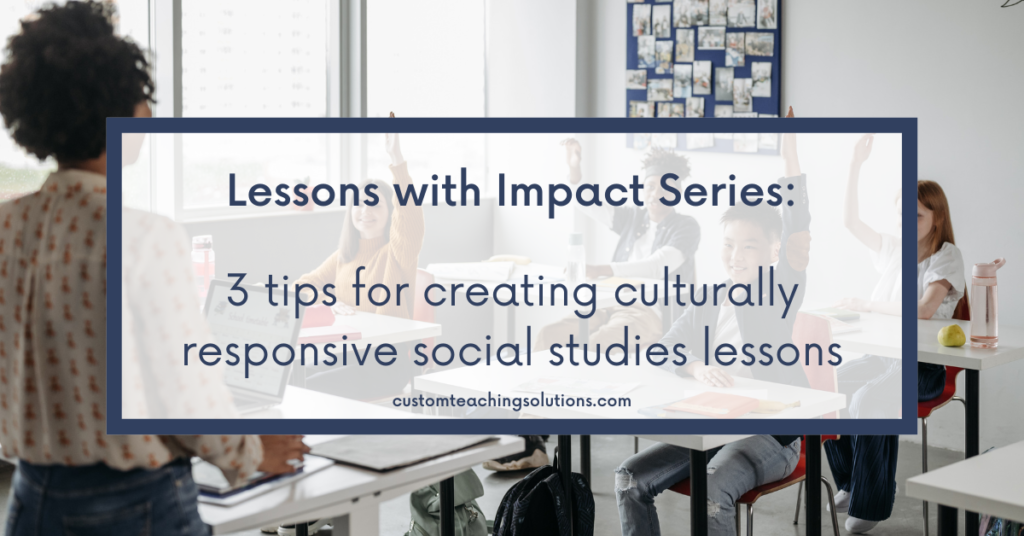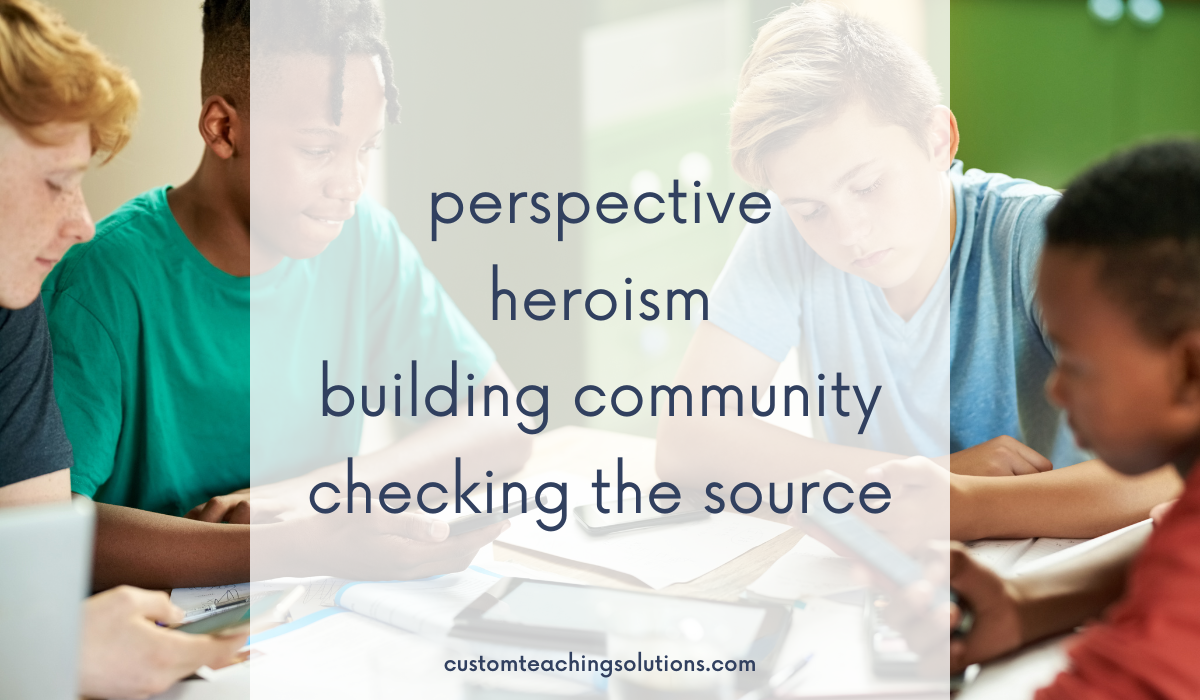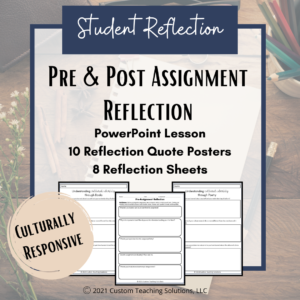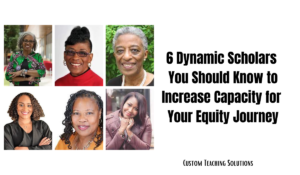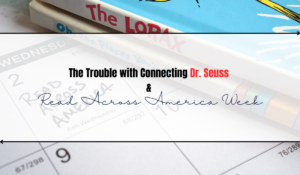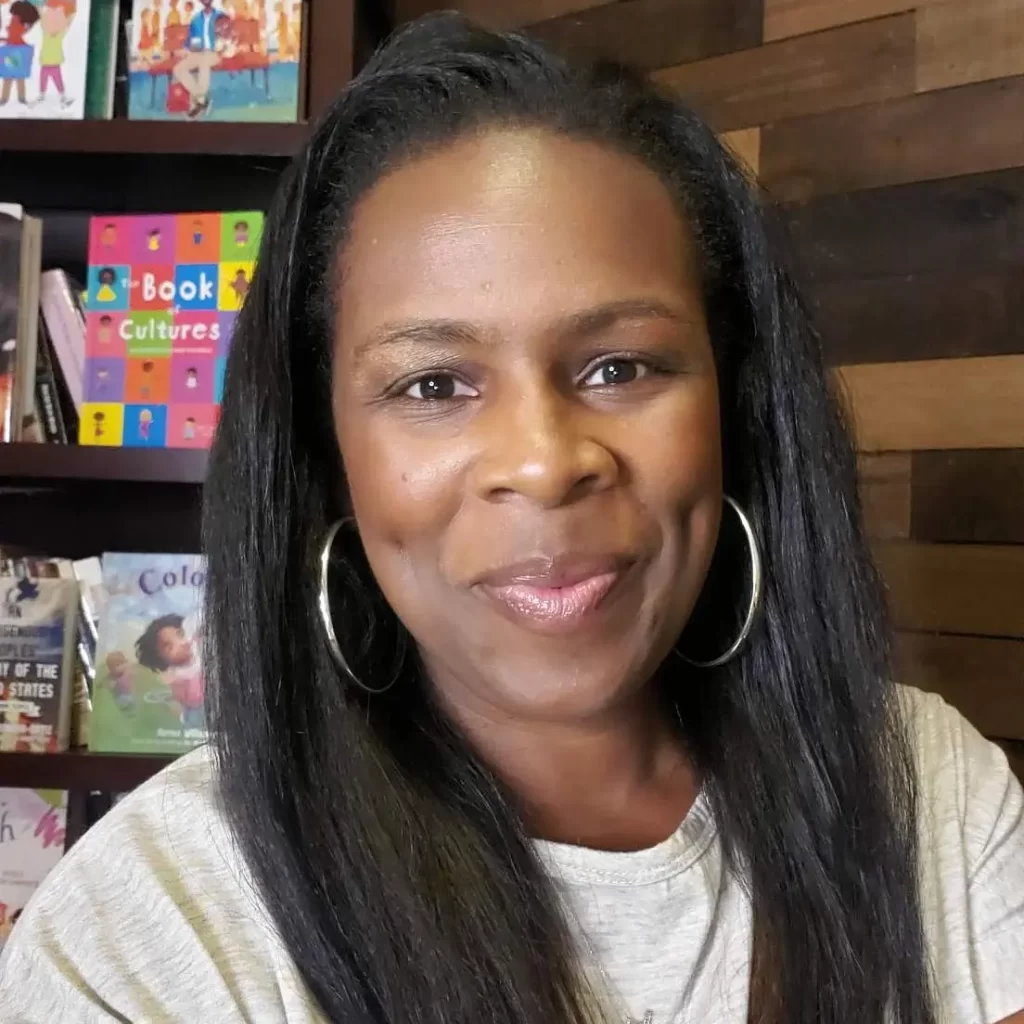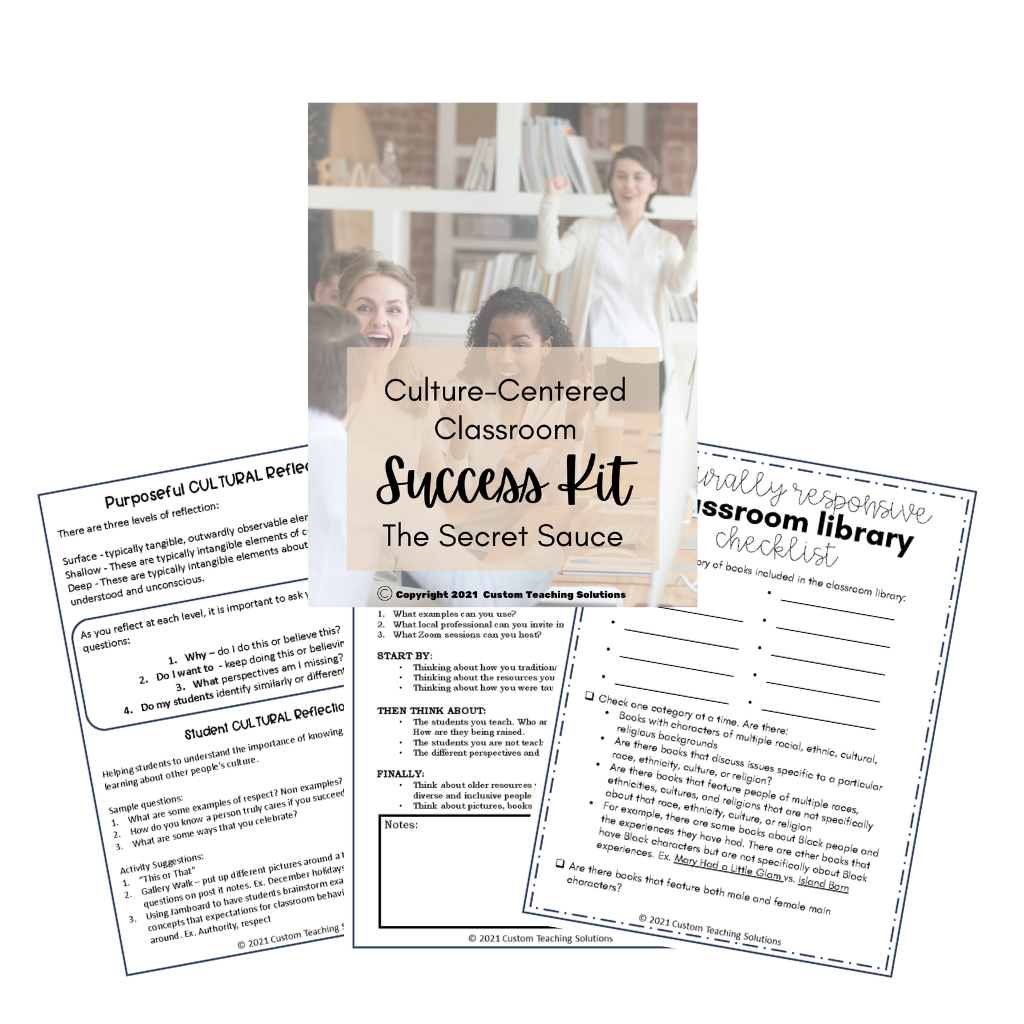Social studies is an umbrella discipline that covers history, geography, civics, economics, and sociology. There are a few other topics that can be covered like art and anthropology and philosophy, but the five main focus areas are what I mentioned before.
The thing about creating culturally relevant and culturally responsive social studies lessons is that there is so much gook surrounding it. There are layers of bias and perspective that color:
- the “story” in history,
- the way places are represented, displayed, and discussed in geography,
- the understanding of rights and responsibilities of citizens as well as who is a citizen in civics,
- the distribution and access to wealth as well as knowledge surrounding how to make wise money moves in economics,
- and the lens through which social development, societal problems, and the functioning of human society are viewed in sociology
“History is always written by the winners. When two cultures clash, the loser is obliterated, and the winner writes the history books—books which glorify their own cause and disparage the conquered foe. As Napoleon once said, ‘What is history, but a fable agreed upon?’”
– The Davinci Code
Social studies is scary because it is a discipline riddled with complex conversations. It is a disciple with layers and layers of complexity just off rip. Some of the other disciplines have layers that are buried underneath flowers. Things need to be unearthed. Not social studies. The top layer is bumpy, there are several holes covered with saran wrap. So, watch your step.
So how then, do we share social studies with our students in a culturally responsive, appropriate, and inclusive manner? *** With lots of intention.
Three Key Practices for Creating Culturally Responsive Social Studies Lessons
The three key practices that I shared on the last episode are foundational to teaching with intention in the social studies discipline. Those practices are reflection, learning, and implementation. Stepping back to REFLECT on what it is you are teaching and why, is a key first step. Understanding who wrote the story, the theory, the rule and why. Who benefits? Who does not. Who is the victor?
There is this other famous African proverb that you might have heard before, it says, “Until the lion learns how to write, every story will glorify the hunter.”
Therefore, it is important, as a social studies teacher, to think about how “the hunter” is painting their story, their cause to be more glamorous?
As a former 7th and 8th grade social studies teacher, I can tell you that there were many many complex conversations in my classroom. There was also a lot of time spent doing my own research. I love my alma mater, but they didn’t teach me a lot about a lot. In order to truly know, I had to seek out some information on my own. I had to LEARN. I had to go to different sources. Ask questions.
I had to get comfortable with the uncomfortable. And guess what? There were so many times when the story that I had been told over and over again as a child was unearthed, reframed, and told from a different perspective that wasn’t as rosy. Shattering stories and people and ways of being that had become idols. They had become standard. It was tough, but necessary if I was going to provide my students with an accurate history. If I was going to be able to let them grapple with concepts, disagree with systems, and question motives.
I had to let go. I couldn’t hold so tightly to my truths that I wouldn’t allow my students to explore their truths. And do this in a safe space. Because let’s be honest, it’s going to happen. Students are going to question and explore, but who will be there to help them navigate?
Another strategy that was helpful for me was looking at my students and then learning about my students. None of this I don’t see color nonsense. None of this we’re all the same rhetoric. We each have a story. Our students have a story. There are beautiful layers and traumatized layers. I needed to see my students, fully and completely in order to understand what they needed to learn – not just what was dictated by the state, but what they personally need to thrive.
What did they need to hear? Something in opposition to what was being learned at home? (Black people, Mexican people, Indigenous people, women… are intelligent, creative, forward thinkers, innovative, funny, etc)
What did they need to see? Kings and queens from more than just one or two continents. Theorist and inventors and artists of every gender and hue.
The Anchor Questions
What did they need to question? I love, love, love to use three anchor questions when I am planning lessons. Depending on the age of your students you can volley these questions back to them. The questions are:
- What are my students learning about themselves?
- What are my students learning about their peers?
- What are my students learning about the world around them?
These questions allow for a deeper level of learning. There is focus on more than just the information being presented, there is a focus on the connection between student and study. No longer am I teaching for teaching sake. I am now facilitating a learning experience of discovery, thought, curiosity, disappointment, confusion, anger, etc. Some learning is fun, other learning is challenging. Introducing students to the complex nuances of learning from an early age allows them to recognize that life is a learning experience. Sometimes there is no person to guide you or facilitate the process. Sometimes you are alone in your quest.
Finally, after some time of reflection and learning, I would implement. I would take action. It is time to put into practice what I knew was needed. Maybe that meant coupling resources, finding additional primary sources, reaching out to community members for assistance, and really allowing the students’ stories to guide the learning.
There were several times, as a social studies teacher when I would shift directions because I saw my students needed an injection of inspiration. The whole reason I created the lessons on Black Greek organizations (Hop back to episode 7) was because I saw that my students needed some role models. A different perspective. They needed to see groups of young Black adults having fun AND having impact in the community. My students needed to see the possibilities for a future not yet determined. So, although I am a member of Delta Sigma Theta Sorority, Inc. and I know quite a bit about the other 8 organizations, I wanted a complete picture and I needed to do my research. I started Googling information, finding YouTube videos, pulling together articles, and inviting local chapters to connect.
My students loved it year after year.
Look, we get one shot at this. 180 days to make things shake.
Is it scary to think about all the truths you never learned? Yes. Is it scary to think about your students having different opinions than you? Yes. Is it scary to discover that your hero is not perfect? Like not just to understand that all people are flawed, but to have a real life example of something this person did that was not great? Yes.
But what is the purpose of education? Think about this…
“Education either functions as an instrument which is used to facilitate integration of the younger generation into the logic of the present system and bring about conformity or it becomes the practice of freedom, the means by which men and women deal critically and creatively with reality and discover how to participate in the transformation of their world.” –Paulo Freire (Pedagogy of Oppression)
This is a quote that I pull out many times when I am facilitating PD and coaching sessions with teachers because it is important that we think about this… the purpose of education. Why are we teaching? Why are we so married to the one story? The one text book? The one perspective. The one method?
Relevance in Action –
Learning how to navigate complex conversations. I see so many educators on teachergram saying they are not equipped and prepared to talk about certain topics. It is a part of the curriculum, but no one teaches a strategy for effectively doing so.
I have developed a framework for using your S.T.R.E.N.G.T.H.S. to be confident and prepared in this situation. In my Complex Conversations workshop, I walk teachers through the framework to equip them to have these conversations. Now, I won’t share the framework here, because that is not fair to my school partners, but let me give you two strategies:
Choose one topic in your curriculum that is more complex. If you say, “There are none.” I need you to look at your curriculum with fresh eyes. Now you can either write that topic on a sheet of paper or download the thought worksheet that I created for you. The link is in the show notes. Underneath the topic please write reflect, learn, implement.
For reflection, think about how you were taught this topic. Are you teaching it the same way? Why or why not? Who does this benefit?
For learn, I want you to do some additional research. Are there opposing perspectives and viewpoints on the truth of the topic, the way it should be taught, the parties that should be glorified? Whose voice is missing from the teaching of this topic?
For implement, I want you to choose at least one new resource to support learning and one new perspective to share regarding this topic.
That’s it my friends! Remember that we are partners on this journey. I want to hear from you. What challenges you most as a social studies teacher? What brings you the most joy?
And I would be remiss if I didn’t add that if you think this work is something your department could benefit from, reach out to me. Book a FREE discovery call so we can get you scheduled for a workshop.
Keep leveling up.

